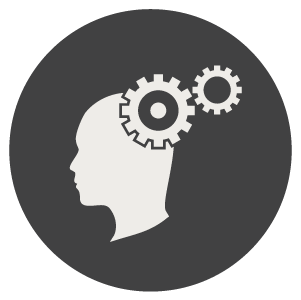Why You Need to Take Your Vacation Days
Work Hard, Play Hard
When it comes to optimizing your bottom line, it starts with your people.
If employees are expected to perform at their best, effective rest and recovery is crucial. You know, the “Work Hard, Play Hard” mentality. While there are countless resources on the Work Hard part of this phrase, this blog article is dedicated to the Play Hard piece.
Perhaps the ultimate form of Play Hard is vacations, an extended period of non-work recovery that is a key piece of employee workplace wellness.
So what makes them so valuable?
Why is it that employees hesitate to take them?
Is there a specific duration we should be aiming for?
In today’s world, what does a vacation even look like?
“If you do not make time for your wellness, you will be forced to make time for your illness”. - Unknown
Employee Vacations Support your Bottom Line
From a business standpoint, vacations are known to help avoid burnout and unplanned employee absences, which can cost a company more than planned time off.
If employees don’t take a regularly scheduled vacation, they may have to take much more costly leaves of absence. Furthermore, vacations are conducive to a better work culture, and ultimately increase the desirability of a workplace. They promote higher productivity during workdays through the reward of time to Play Hard.
In the same way that burnout can be contagious, if a team member declines their vacation time their lower productivity and cynicism can affect everybody else on the team. Short vacation times and therefore more work has demonstrated negative links to health, like higher body mass index, more coffee consumption, and even a higher mortality rate [1].
TLDR: Taking vacations is a strategic advantage to your employees personal wellness, and to the success of the company.
How to Ruin a Perfectly Good Vacation
The worst vacation is the one not taken. First we must understand the variety of reasons why people avoid taking vacation time.
For some, they feel their workload is too heavy, and that stepping away will only increase the amount they need to accomplish and the stress that comes with it. Knowing what they’re in for when they come back makes the vacation ineffective, and can deter individuals from taking one at all.
A lack of leadership buy-in averts people from taking vacation time. As a leader, it is important to practice what you preach and lead by example. Take a vacation when you need one, and encourage your employees to do the same.
Give employees permission to take time off, and make sure the workplace culture supports this. Vacation shaming burdens employees with stress and guilt when asking for time off, which can discourage them from asking when they need it most.
How Long Should A Vacation Be?
Studies measured the highs and lows of vacation happiness and satisfaction and found that it peaked at eight days [2].
Taking too much time can make work stress creep up and start to ruin your time. Not enough time won’t allow you to properly rest. Others do vouch for a shorter duration like a long weekend, where you don’t have quite enough time to let the away-from-work stress build, yet still effectively disconnect from work.
Of course, the magic number for vacation days depends on the person and their role within the company.
How to Vacation in a Pandemic
Vacations are often discussed in regards to:
rest and respite
quality of life
unique experience
an escape from everyday life to idealized locations
If you’re lucky, they involve visiting your favourite unique places, getting better sleep, and enjoying good food. Vacations change up your environment, providing an opportunity for education and learning, exploring values, relationship building, or finding new hobbies.
Vacations have the potential to make us happier, and to get in the right mentality. With the restrictions that come with a global pandemic, how can we achieve a proper vacation and reap the benefits?
Explore your options without crossing any borders or jumping on a plane. In the past, local destinations and landmarks may have seemed dull compared to an overseas exotic journey. This is the perfect opportunity to explore close to home! Jump in your car, and connect with nature close by. As long as you’re putting distance between you and your work, it’s a vacation.
You don’t even have to leave the city, just leave your phone.
Did you know that the positive effects of vacation fade over time? Find out why in episode 10 of The Science of Work Podcast.
Additionally, we explore the consequences of unplanned absences, how productivity and performance are linked to vacations, and further research and statistics about vacations.
Consciously design your day, or someone else will.
References
[1] Strandberg, T. E., et al. “Associations of Vacation Time With Lifestyle, LongTerm Mortality and Health-Related Quality of Life in Old Age: The Helsinki Businessmen Study.” European Geriatric Medicine, vol. 8, no. 3, 2017, pp. 260– 64. Crossref, doi:10.1016/j.eurger.2017.03.003.
[2] Bloom, Jessica de, et al. “Vacation (After-) Effects on Employee Health and WellBeing, and the Role of Vacation Activities, Experiences and Sleep.” Journal of Happiness Studies, vol. 14, no. 2, 2012, pp. 613–33. Crossref, doi:10.1007/s10902-012-9345-3.
Dr Lisa Belanger
Lisa has a Ph.D. in Behavioural Medicine, an Executive MBA, and is a Certified Exercise Physiologist and High Performance Specialist.

















